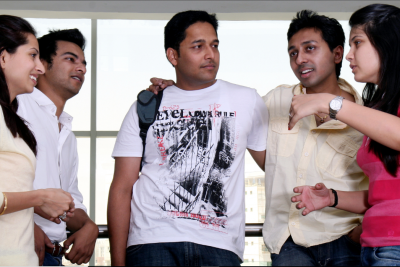The new world of business is characterised by volatility, uncertainty, complexity and ambiguity and it is fueled by technology.
In today’s scenario, everyone looks for an MBA. However, they are not well equipped to keep up with the rapidly changing requirements of organisations. We cannot get the new kind of graduates from the old kind of management education that was created for the businesses of the previous century.
So how does one equip oneself with the changing demands of the business scenario?
Design Thinking! The systematic process to master the art of innovation!
Leading organisations like Apple, Google, Facebook, Amazon that have established their strong global presence with unprecedented speed are anchoring themselves in Design Thinking and not just in technology and management efficiency.
Knowing your audience - Empathy
When a company sells its product, it knows what the customers want. More so, it takes a step forward to understand why they want it. What does the product mean to someone? How does it fit the customer's lifestyle? How will people feel about the product in the future? Companies want to understand the emotions behind owning the product, the process of buying it and how customers can find out what they need, without feeling “sold” to by staff.
This is empathy.
It is the first step in design thinking because it is a skill that allows us to understand and share the same feelings that others feel. Through empathy, we can put ourselves in other people's shoes and connect with how they might be feeling about their problem, circumstance, or situation and uncover new solutions.
Companies such as Deutsche Bank use the process of using design thinking to innovate. They “force” employees to act as customers and use the same services and products as if they were clients.
This human-centered approach to design thinking serves as stepping stones to innovation and helps to unravel problems that we may not have known
Focus on Liberal Arts Education:
The general aura around Liberal arts in the current age is not that appealing. We tend to think what we can gain from studying history. A liberal education — as best defined by Cardinal Newman in 1854 — is a “
broad exposure to the outlines of knowledge” for its own sake, rather than to acquire skills to practice a trade or do a job.
Students develop the necessary art of critical thinking by deep diving into subjects such as Ethnography, Anthropology, Sociology, etc., They learn about humans, their culture in the past and the present so that they can predict the future. In this way, they are better suited at examining behaviours of the users and thereby are better equipped in finding the right solution for them.
Learning by doing through Product Lab:
MBA in Business Design focuses on changing the age-old culture of thinking failure as a negative thing into a mindset where failing and failing fast is a way to reach the end solution faster.
Students in a Design school involve themselves not only in creating ideas but also actively involve themselves in
transforming ideas to real-life objects. Product labs are collaborative workspaces where necessary resources such as 3D printing, laser cutters, CNC machines, soldering irons, etc., are available for the students who wish to convert their raw ideas into real life products.
Nurturing Experience
A design culture is nurturing. It doesn’t encourage failure, but the iterative nature of the design process recognizes that it’s rare to get things right the first time. It’s about getting the right solution through an iterative method.
As Clint Runge puts it, Design Thinking is not about thinking out of the box, but on its edge, its corner, its flap and under its barcode. It is the glue that binds all disciplines.
Are you interested in being a part of the journey of innovation?
SOIL School of Business Design, India’s first business school that integrates Business and Design offers a Two-Year PGDM in Business Design.
Start your application,
here.
If you would like to know more about the PGDM Program, please
CLICK HERE to download brochure


